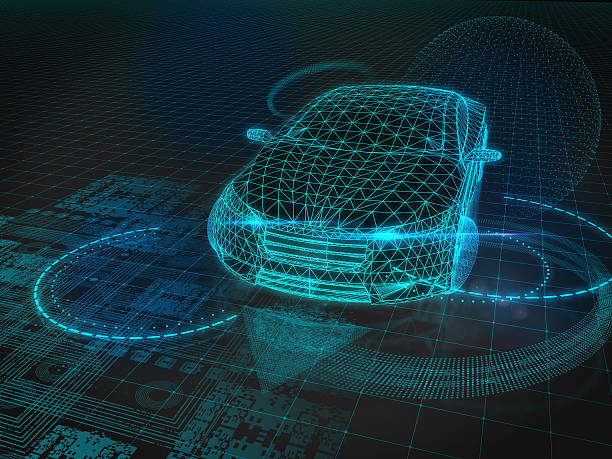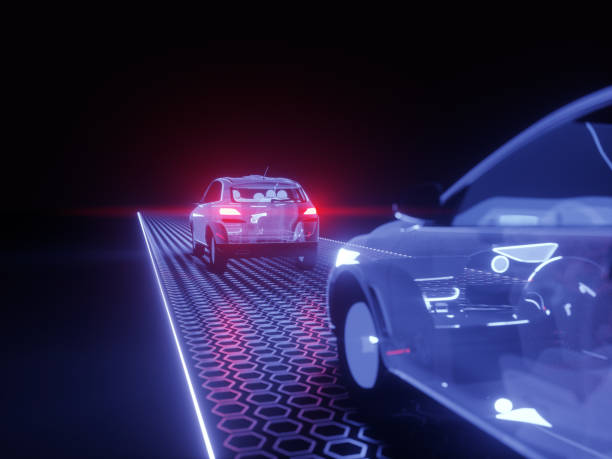Introduction
The transportation industry is undergoing a monumental shift with the increasing development of autonomous vehicles. These vehicles, powered by advanced artificial intelligence and sensor technologies, are on the cusp of revolutionizing the way we perceive transportation. Among the crucial components contributing to their functionality, gesture recognition technology stands out as a key interface enabling intuitive interactions between passengers and vehicles. This article will delve into the intricacies of patenting autonomous vehicle gesture recognition, shedding light on its significance and the critical steps involved in protecting this cutting-edge technology.

Understanding Autonomous Vehicle Gesture Recognition
Autonomous vehicle gesture recognition is a sophisticated technology that enables vehicles to interpret and respond to human gestures, providing a seamless and intuitive experience for passengers. Embedded within the vehicle’s interface, this technology relies on a complex network of sensors, cameras, and machine learning algorithms to identify and interpret various gestures accurately. From simple hand movements to more complex gestures, such as directional indications or acknowledgment signals, the system must swiftly process and respond to these inputs, ensuring a safe and user-friendly travel experience.
Despite its evident potential, the field of autonomous vehicle gesture recognition faces several challenges. These include the need for improved accuracy in gesture interpretation, especially in diverse environmental conditions, as well as the optimization of real-time processing capabilities to facilitate instantaneous responses. Moreover, ensuring the seamless integration of gesture recognition with other autonomous vehicle technologies remains a critical concern for researchers and developers in the field.
Exploring the Patenting Process
As autonomous vehicle technology continues to gain traction, patent protection plays a pivotal role in safeguarding intellectual property and promoting innovation in the industry. Patents offer legal exclusivity to the inventors, granting them the right to exclude others from making, using, or selling their patented inventions without permission. For developers of autonomous vehicle gesture recognition technology, obtaining a patent is not only a means of protecting their intellectual property but also a strategy to establish a competitive edge in the market.
However, the patenting process is multifaceted and demands meticulous attention to detail. Prior to filing for a patent, it is essential to conduct a thorough review of existing patents in the field, ensuring that the proposed technology meets the criteria for patentability. Additionally, understanding the nuances of patent law and the specific requirements for autonomous vehicle technologies is crucial for a successful application process.
Research and Development in Autonomous Vehicle Gesture Recognition
The landscape of autonomous vehicle gesture recognition is rife with innovative research and development efforts aimed at enhancing the technology’s capabilities. A comprehensive analysis of existing patents in the field reveals a diverse range of approaches and methodologies, each contributing to the evolution of gesture recognition systems in autonomous vehicles. From advancements in sensor technology to the integration of advanced machine learning algorithms, researchers are continuously striving to overcome the existing challenges and push the boundaries of what is possible.
Case studies highlighting successful patent applications offer valuable insights into the strategies employed by industry leaders to navigate the complexities of the patenting process. These studies emphasize the importance of thorough documentation, comprehensive patent claims, and a clear demonstration of the technology’s novelty and non-obviousness. By drawing inspiration from these successful endeavors, aspiring inventors can refine their approach to patenting autonomous vehicle gesture recognition technology.

Legal Considerations in Patenting Gesture Recognition Technology
When patenting gesture recognition technology for autonomous vehicles, several legal considerations must be carefully addressed to ensure the protection and enforcement of intellectual property rights. Understanding the legal landscape and potential challenges can significantly contribute to a successful patent application process. Here, we delve into the key legal considerations relevant to patenting gesture recognition technology:
1. Novelty and Non-obviousness
When filing a patent application, it is crucial to demonstrate that the technology is novel and non-obvious. The technology must not have been previously disclosed in any public domain, including scientific publications, prior patents, or public demonstrations. Similarly, the invention should not be an obvious extension of existing technologies. Conducting a thorough prior art search and documenting the novelty and inventive step of the gesture recognition technology are essential steps in meeting these requirements.
2. Patent Eligibility
Ensuring that the gesture recognition technology meets the criteria for patent eligibility is imperative. In some jurisdictions, certain types of software or algorithms may face challenges regarding patent eligibility. Therefore, it is crucial to consult with patent attorneys well-versed in the specific regulations governing software patents and ensure that the technology meets the requirements for patentable subject matter in the relevant jurisdiction.
3. Infringement Risk Assessment
A comprehensive infringement risk assessment is essential to identify any potential conflicts with existing patents or technologies. By conducting a thorough analysis of the patent landscape and assessing the scope of existing patents related to gesture recognition and autonomous vehicles, inventors can better understand the potential risks of infringement. This assessment can help shape the patent claims and ensure that the proposed technology does not infringe upon existing patents.
4. Patent Claims Drafting
Drafting robust patent claims is critical in defining the scope of protection for the gesture recognition technology. Clear and precise language is necessary to outline the specific features and functionalities of the technology, leaving no room for ambiguity or misinterpretation. Ensuring that the patent claims are adequately supported by the description of the invention is essential for withstanding any legal challenges or disputes that may arise during the patent application process or subsequent enforcement efforts.
5. Patent Enforcement and Litigation
In the event of potential patent infringements, being prepared for patent enforcement and litigation is crucial. This involves understanding the legal procedures and requirements for enforcing patent rights, including the possibility of initiating legal action against infringing parties. Collaborating with experienced intellectual property attorneys can provide valuable guidance on the enforcement strategies and legal remedies available to protect the patented gesture recognition technology from unauthorized use or reproduction.
6. International Patent Protection
For gesture recognition technology intended for global markets, securing international patent protection is essential. Understanding the nuances of international patent laws, including the requirements for filing international patent applications and the procedures for obtaining patent protection in multiple jurisdictions, is crucial for safeguarding intellectual property rights on a global scale. Engaging with patent attorneys who possess expertise in international patent law can facilitate the smooth navigation of the complexities associated with securing international patent protection.
7. Licensing and Commercialization
Developing a comprehensive strategy for licensing and commercializing the patented gesture recognition technology can maximize its market potential and generate revenue streams. This strategy should include considerations for negotiating licensing agreements, establishing royalty terms, and addressing potential disputes that may arise between licensors and licensees. A well-defined licensing and commercialization strategy can not only promote the widespread adoption of the technology but also contribute to the overall success and profitability of the autonomous vehicle gesture recognition innovation.
By addressing these legal considerations and consulting with experienced intellectual property attorneys throughout the patent application process, developers can effectively navigate the complexities of patenting gesture recognition technology for autonomous vehicles. Ensuring compliance with relevant patent laws and regulations, conducting thorough risk assessments, and formulating a robust enforcement strategy are essential for protecting intellectual property rights and fostering innovation in the rapidly evolving landscape of autonomous vehicle technologies.
Best Practices for Patenting Autonomous Vehicle Gesture Recognition
To navigate the intricate process of patenting autonomous vehicle gesture recognition technology effectively, developers and innovators should adhere to a set of best practices. By following these guidelines, they can increase the likelihood of securing robust patent protection for their inventions. Here are some best practices to consider:
1. Conduct Comprehensive Prior Art Searches
- Perform thorough searches to identify existing patents, publications, and other publicly available information related to autonomous vehicle gesture recognition technology.
- Analyze the identified prior art to understand the scope of existing technologies and assess the novelty and inventive step of the proposed gesture recognition technology.
2. Document the Invention in Detail
- Provide a comprehensive and detailed description of the autonomous vehicle gesture recognition technology in the patent application.
- Clearly outline the technical specifications, components, and functionalities of the system, emphasizing the unique aspects and innovative features that differentiate it from existing solutions.
3. Draft Clear and Precise Patent Claims
- Formulate patent claims that precisely define the scope of protection for the gesture recognition technology.
- Ensure that the language used in the patent claims is clear, concise, and unambiguous, leaving no room for misinterpretation or confusion about the protected invention’s key elements and functionalities.
4. Emphasize Technological Advancements and Innovations
- Highlight the technological advancements and innovations incorporated into the autonomous vehicle gesture recognition system, emphasizing how these advancements address existing challenges and improve the overall performance and user experience.
- Clearly articulate how the technology represents a significant leap forward compared to existing solutions, emphasizing the unique benefits and advantages it offers.
5. Work with Experienced Patent Attorneys
- Collaborate with experienced patent attorneys specializing in autonomous vehicle technologies and intellectual property law.
- Leverage their expertise and guidance to navigate the intricacies of the patenting process, from conducting prior art searches to drafting patent claims and responding to patent office actions.
6. Review and Update Patent Filing Strategy
- Regularly review and update the patent filing strategy to align with the latest developments in autonomous vehicle gesture recognition technology and evolving patent laws and regulations.
- Stay informed about changes in the regulatory landscape to ensure that the patent application complies with the most up-to-date legal requirements and standards.
7. Maintain Detailed Records and Documentation
- Maintain meticulous records and documentation throughout the development and patenting process, including research notes, design sketches, test results, and any other relevant information.
- Document all stages of innovation, from conceptualization to prototyping and testing, to establish a clear and comprehensive record of the technology’s evolution and development.
8. Regularly Monitor and Assess Market Trends
- Stay informed about emerging market trends, technological advancements, and consumer preferences related to autonomous vehicle gesture recognition technology.
- Monitor the competitive landscape and assess how the patented technology can be positioned to capitalize on market opportunities and address evolving industry demands.
By implementing these best practices, developers can strengthen their patenting strategy for autonomous vehicle gesture recognition technology, ensuring comprehensive protection of their intellectual property and laying the foundation for continued innovation and market success.

Future Trends and Implications in Autonomous Vehicle Gesture Recognition
Looking ahead, the future of autonomous vehicle gesture recognition holds promising prospects for further innovation and advancement. Anticipated technological developments, including the integration of advanced biometric recognition systems and enhanced sensor capabilities, are poised to redefine the capabilities of autonomous vehicles. As patented technologies continue to shape the landscape of the autonomous vehicle market, industry players must remain vigilant in their pursuit of groundbreaking advancements, while ensuring the protection of their intellectual property rights.
Moreover, the implications of patented gesture recognition technologies extend beyond the realm of autonomous vehicles, offering potential applications in various industries, including healthcare, gaming, and consumer electronics. The versatility of these technologies underscores their transformative potential and underscores the need for comprehensive patent protection to facilitate widespread adoption and foster continued technological progress.
Conclusion
In conclusion, patenting autonomous vehicle gesture recognition technology represents a critical step in the advancement and proliferation of innovative transportation solutions. By acknowledging the significance of patent protection and adhering to the best practices outlined in this article, developers can establish a strong foundation for their intellectual property and contribute to the continued evolution of autonomous vehicle technologies. As the industry continues to evolve, embracing a proactive approach to patenting and staying attuned to the dynamic legal landscape will be crucial in maintaining a competitive edge and driving the future of autonomous vehicle gesture recognition forward.


